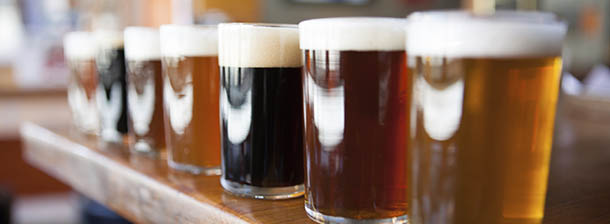

Alcohol and Alcoholism
Alcoholism and alcohol abuse is all too common in the United States. This is the case partly as a result of the wide availability of alcohol and partly because of the fact that there are relatively few limits on its use. Alcohol is easily fermented using the glucose found in sugar and the substance can be found in many beverages including beer, wine, hard liquor as well as some mouthwashes and over-the-counter medications. It is a drug, despite the tendency to think otherwise, and it continues to cause significant detrimental effects to abusers and those around them.
The Difference between Alcoholism and Alcohol Abuse
Despite seeming very similar, there are differences between alcoholism or alcohol dependence and alcohol abuse. Those dependent on alcohol will show signs of physical addiction and will continue to consume alcohol despite all the negative side effects it creates. They will continue to use despite losing family, friends, a job and money as well as ignoring mental and physical health. This is essentially physical addiction.
On the other hand, someone who abuses alcohol will often encounter problems related to their alcohol consumption, such as negatively altered mood, but will not show signs of physical addiction.
How It Works:
Alcohol is consumed in its liquid form and then absorbed through the stomach lining and the lining of the small intestine as it is consumed. As the alcohol enters the bloodstream it causes side effects. Alcohol can be enjoyable in moderation, however when the substance is being abused, it can start to cause problems in the user’s life and lead to physical dependence.
The Effects:
When the alcohol enters the bloodstream, users start to feel relaxed and they may also lose some of their inhibitions, both of which are primary reasons for consuming the drug. As the alcohol is consumed the body develops a tolerance to it, which means that the user needs to take even more to feel the same buzz. As the user consumes more and more alcohol, their senses and vision can be impaired, their moods and judgment can be altered and the result is often serious. As we all know, driving under the influence is a dangerous and all too common occurrence, which results in many traffic accidents and fatalities. An alcohol abuser becomes an alcoholic when they begin to rely on it for daily function.
Over the long-term, alcoholics have an increased incidence of liver problems and brain and heart function can also be damaged. Alcohol can also increase the incidence of certain forms of cancer and alcohol consumption during pregnancy can cause fetal alcohol syndrome as well as other growth and long-term psychological damage to the fetus.
Treatment Options:
Treatment for alcoholism depends on the severity of the problem as well as the length of time that the person has been abusing. When alcoholics are first treated, they are usually admitted to a detox center. As they remove alcohol from their system, withdrawal can occur. Depending on the severity of the abuse, withdrawal can be significant and include uncontrolled sweating, vomiting, increased heart rate and even convulsions. After detox, immediate treatment for alcohol abuse and dependence is very important. This is often performed in a 30, 60 or 90 day residential program. Once a client has completed a course of treatment, they need to remain in a support group indefinitely. AA, Alcoholics Anonymous, is the most prolific of the support groups and can help the alcoholic remain sober for the rest of their life.